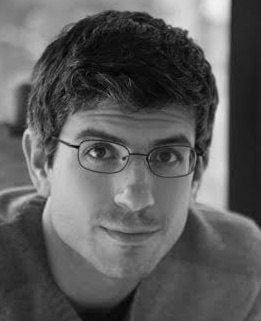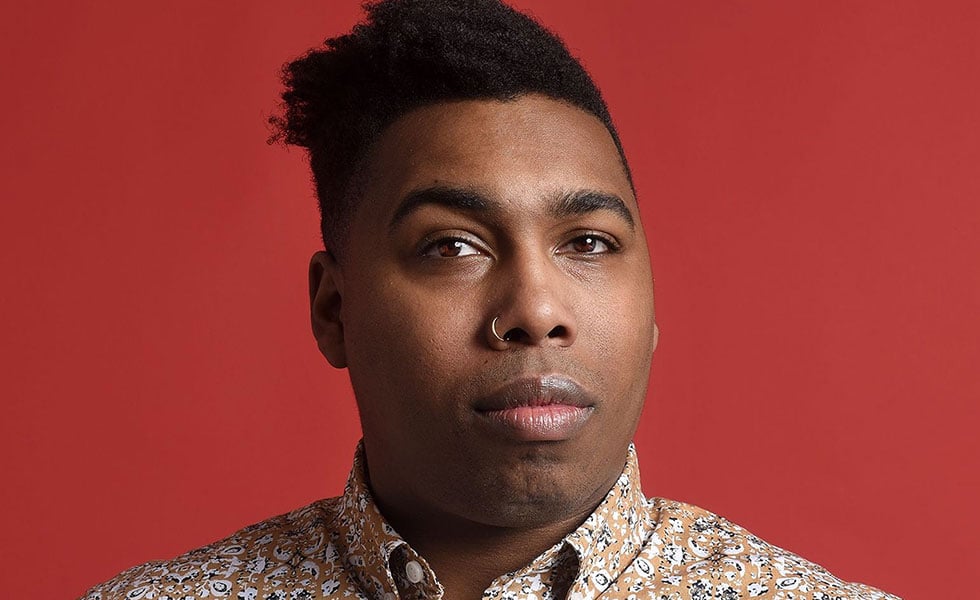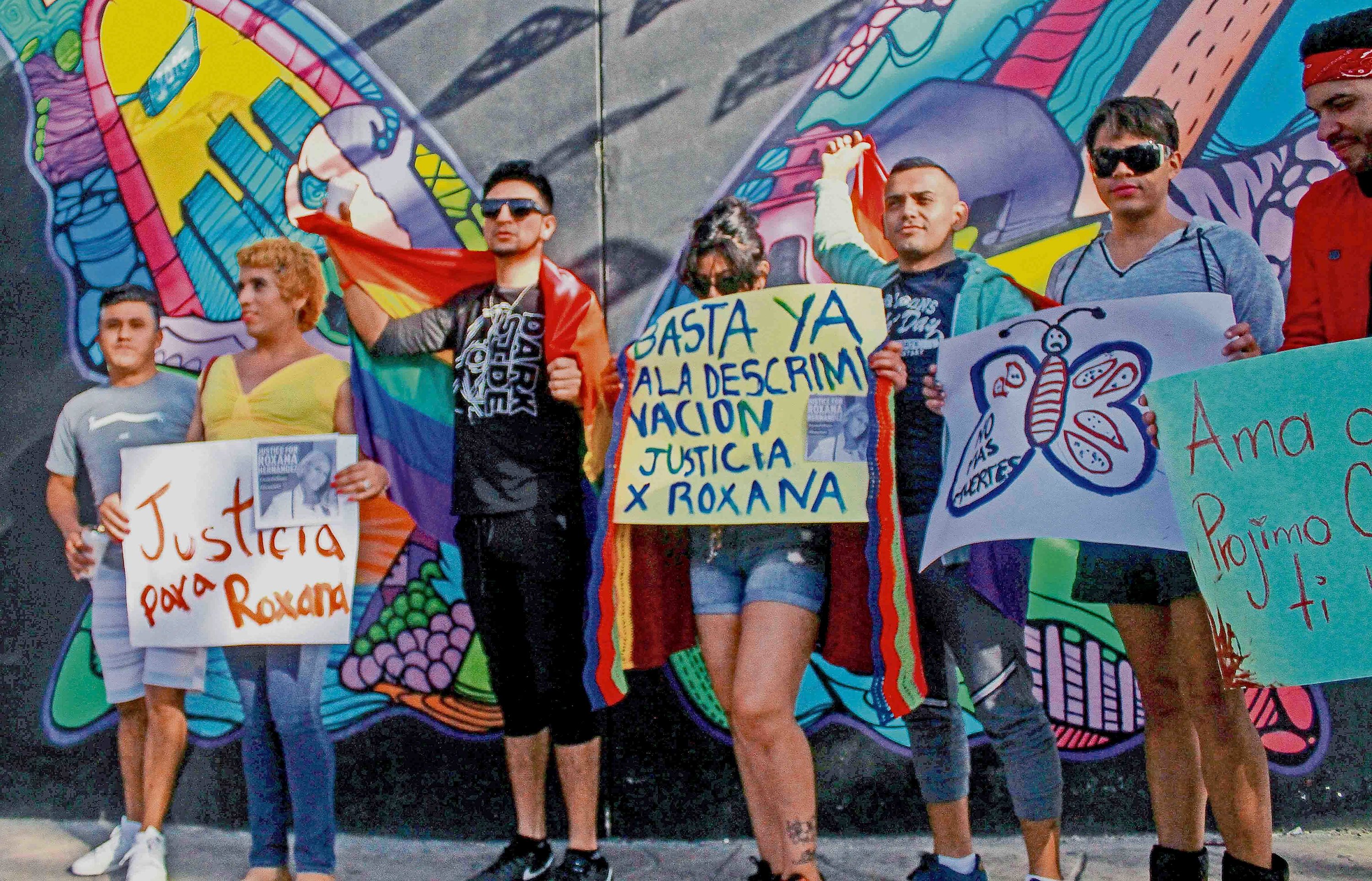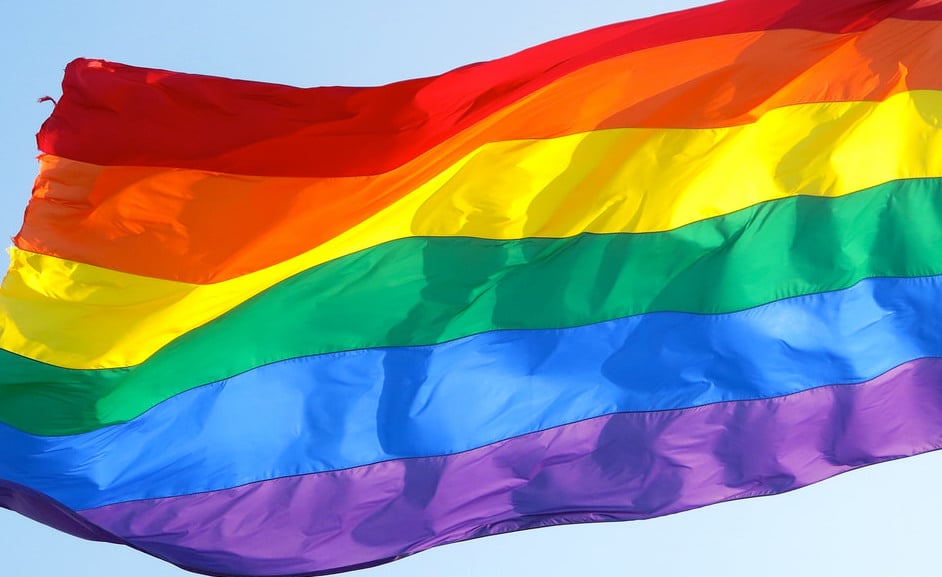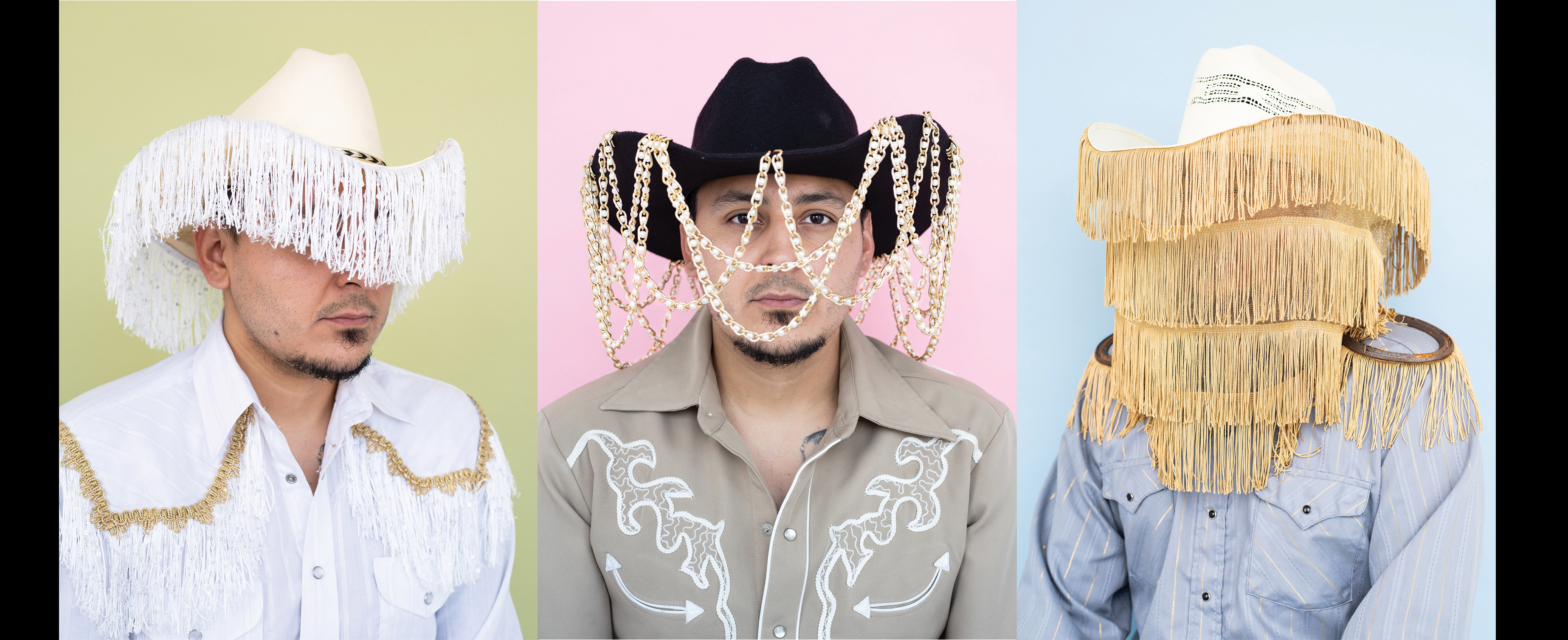

Jose Villalobos’ art redresses the macho traditions of norteño culture.
–
by Michael Agresta
June 24, 2019
On a June evening in 2018, artist Jose Villalobos stood quietly in an exhibit hall at the Museo de Arte de Ciudad Juárez, watching the crowd. His artwork, “De La Misma Piel / Of the Same Skin,” was making its regional debut as part of the Transborder Biennial, a binational exhibition also on display at Villalobos’ hometown El Paso Museum of Art. Villalobos, who is gay and makes work that challenges and reinvents symbols of macho norteño culture, could only guess how his work would be received by the northern Mexican crowd — and by his fronterizo family, if they chose to show up at all.
“De La Misma Piel” is a simple but affecting work: a line of leather belts, each emblazoned with an all-caps word where a family surname might typically be imprinted. These words are anti-gay slurs: maricón, jotito, mariposa. The work speaks to the homophobia implicit in macho men’s fashion, and to a painful sense of being “branded” that comes with gay life against this cultural backdrop.
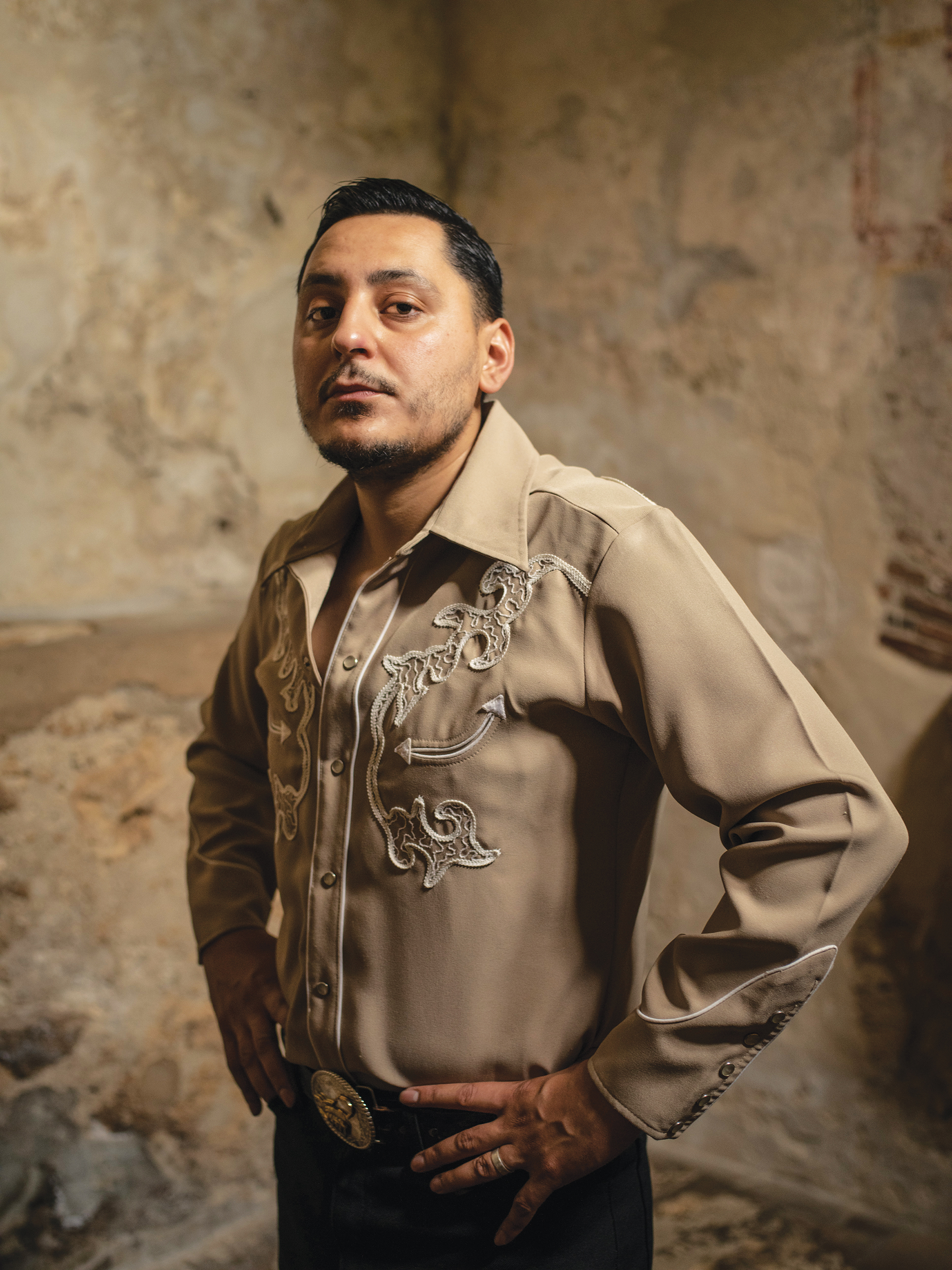
Villalobos sees his work, which includes clothing-based sculpture and performance art, as pitched against a broader performance of gender and sexuality. “I would see my uncles wear the belts and the hats, and also my dad,” he explains. “For them it’s this normal thing, but also it’s… How do I explain it? Especially with these Texas men or macho men, when they start to wear these specific attires, the hats and the boots, it becomes a symbol of power. It also becomes a performance.”
As Villalobos knows well, not everyone is open to having that performance of masculinity challenged or subverted. “I thought it was super important for those belts to be there,” he says. “I always say that if your work doesn’t cause any type of reaction, there’s something wrong with it.”
Viewers’ reactions ranged from embarrassed laughter to incomprehension to, occasionally, appreciation. As for Villalobos’ extended family, which includes branches on both sides of the Rio Grande, his mother was one of the few to make an appearance. “She saw it for the first time,” Villalobos recalls. “She just goes, ‘Ay, que feo.’” (This expression can mean both “How ugly” and “That’s too bad.”)
–
Villalobos, 30, makes work that is rooted in personal trauma and family history. Since coming out at 23, he remains on the fringes of his tight-knit family. When he visits El Paso and Juarez from his new home in San Antonio, his relatives insist on referring to his partner as his “friend” or “compañero.” After he was unable to attend the funeral of his grandfather, he later caught wind that he wouldn’t have been welcome anyway, since an uncle “would not allow faggots in the building.”
A life on the fringes is nothing new for Villalobos. In several senses — including ethnicity, nationality and class — he was born into a sense of not-belonging. Villalobos’ mother, who was born in Durango, came to the United States as a poor immigrant and was undocumented until marrying his father. She worked as a housekeeper in El Paso beginning at age 13, and at times was locked in a basement overnight by her employers. Villalobos’ upbringing, too, was binational, with several visits per week and long summer stays in Ciudad Juárez. Mostly, though, he grew up in a mobile home park in West El Paso, a spot of poverty amid relative wealth.
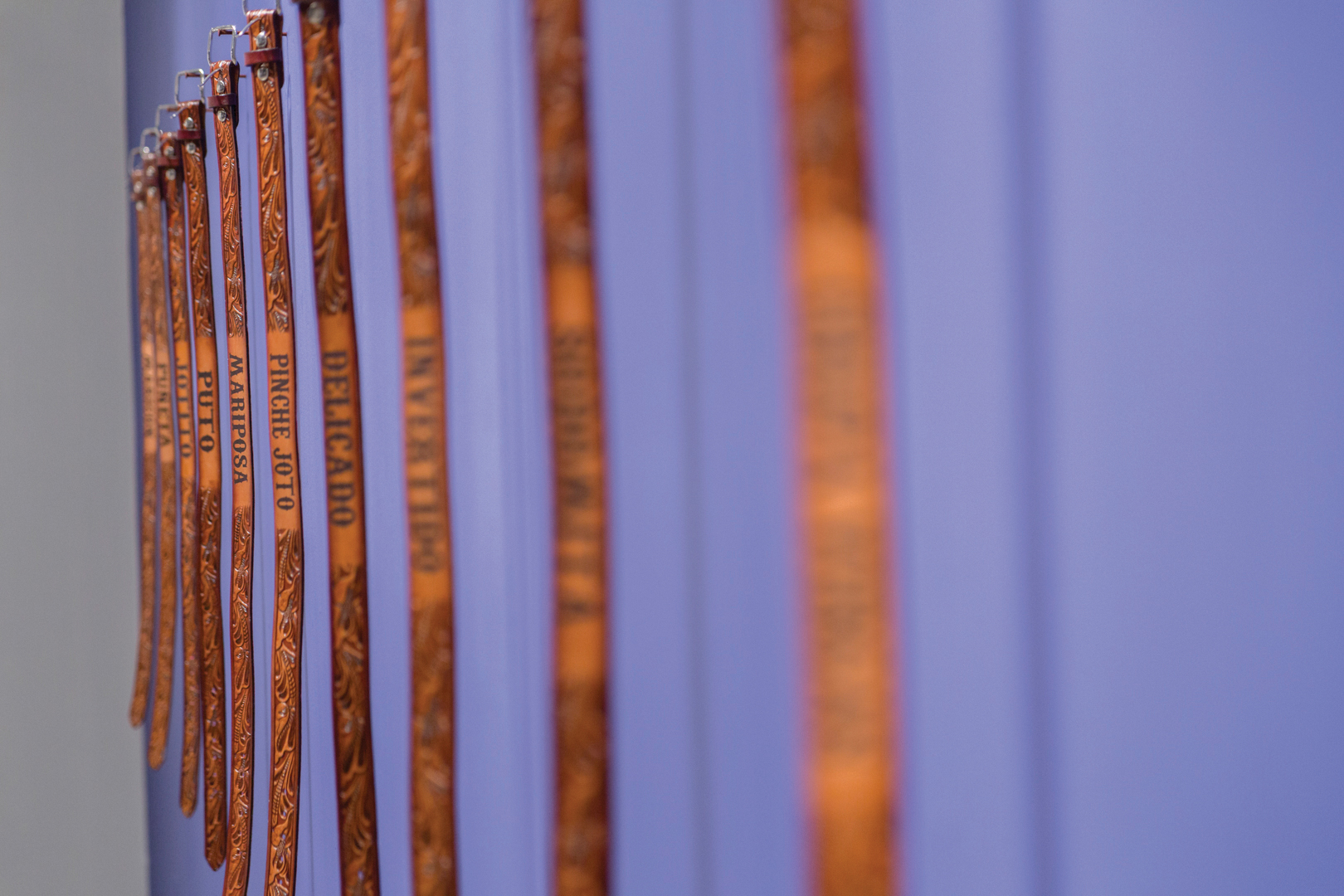
His father, who worked as a mechanic, died of cancer when Villalobos was 10, and his mother was ill throughout his teenage years. Beginning at 16, Villalobos took a full-time job after school at a telemarketing company, working eight-hour shifts to support himself and his ailing mother. Eventually he dropped out, later finishing his diploma at a charter school.
Against such a backdrop of struggle and dislocation, the sense of belonging afforded by family, culture and religion can be precious. But Villalobos’ sexuality put him again on the fringes. “I always corrected myself, growing up,” he says. “If I was doing some mannerisms that were not supposed to be that way, I’d have to.”
As for anti-gay slurs, he adds, “Yeah, I heard that from cousins, uncles, brothers-in-law, other kids in school.”
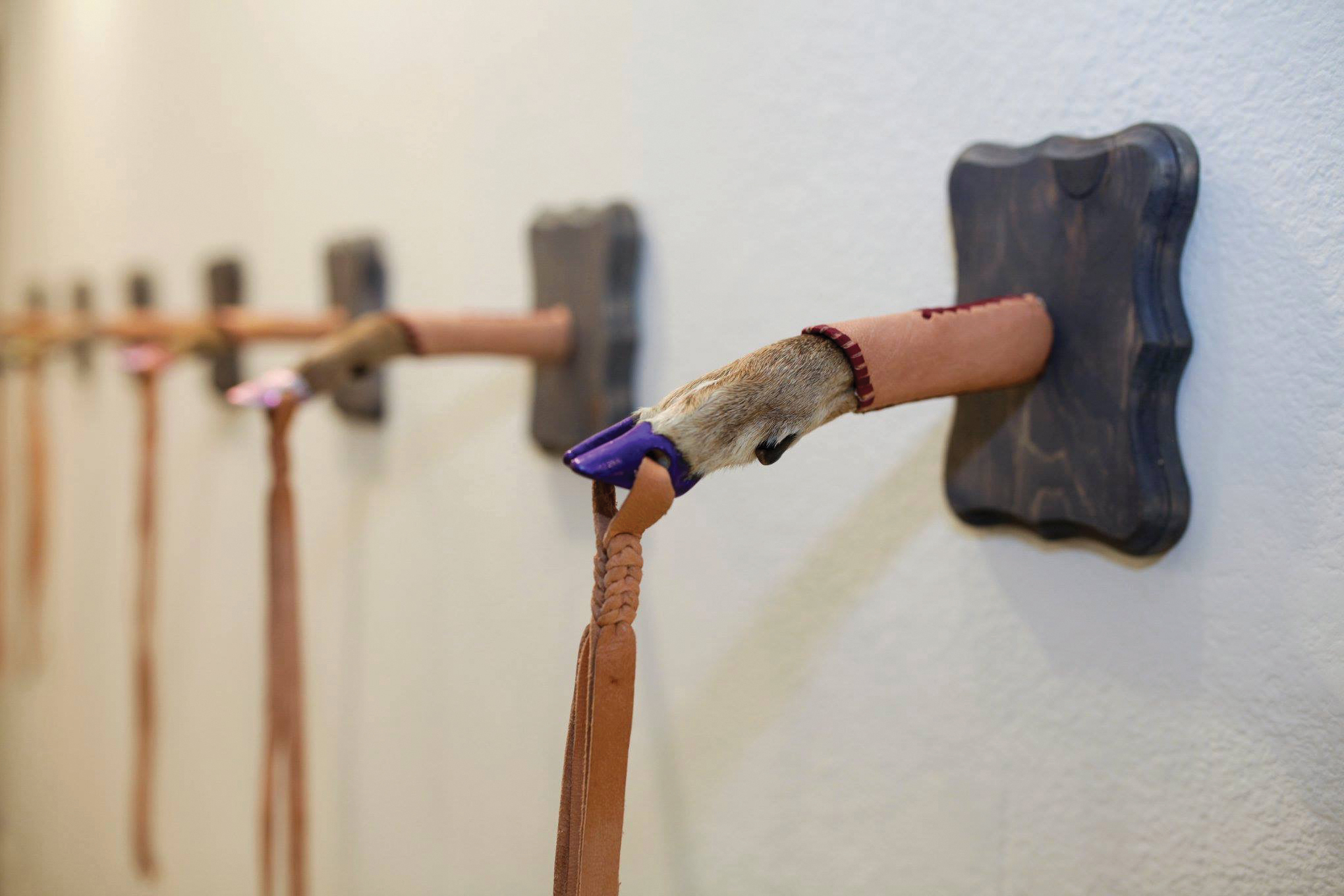
Although he enjoyed drawing, Villalobos did not grow up around art in El Paso, discovering its possibilities only as a University of Texas-San Antonio student in his mid-20s. He speaks of his childhood love for norteño music, not least because of the outrageous costumes. “I’d find myself going like, ‘Hell yeah, look, fringe!’” he says. “But I knew that I couldn’t wear it.”
Instead, he took great pains to try to reconcile himself to his family and their traditions, getting baptized for a second time at 18 and remaining in the closet until after he left for college. Though he’d long known he was gay, coming out felt impossible. “There would be times I would want to come out and I couldn’t,” he says. “I wanted to make [my family] happy. I put them in front of my own mental health. It totally damaged me. I suffered a lot — depression and alcohol abuse.”
–
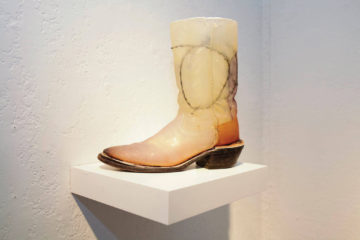
Villalobos’ life today as an up-and-coming artist — last year, he won a prestigious $25,000 grant from the Joan Mitchell Foundation in New York, and he’s debuting new work across Texas at a remarkable clip — is more comfortable than his young adulthood in El Paso. Today, he lives on the respectable fringes of his adopted city. His studio is a carpeted upstairs bedroom tucked away in a modest suburban housing development in northeast San Antonio, out past a Union Pacific rail yard. For the time being, Villalobos rolls out a tarp when his art-making gets messy, though he and his partner plan to eventually install wood floors throughout the house and clear out the garage for use as a workspace.
For now, the upstairs studio, crowded with examples of Villalobos’ recent work, feels like the bedroom of a child who collects norteño cowboy gear — though upon closer inspection, all the objects are skewed somehow. Villalobos refers to his approach as “cathartic,” meaning each piece works through a troubling memory. In this sense, he has also surrounded himself with the ghosts of his partially estranged extended family.
A striking example is his “Sin la S / Without the S” installation, which he showed at Mexic-Arte in Austin in 2017 and in El Paso at the Transborder Biennial last year. This piece comprises 10 cowboy hats hung from the ceiling and rimmed with long, frilly tassels. The tassels would hide a wearer’s face, like a kind of Carnival mask; in the installation, they suggest a gathering of ancestors. Each hat, Villalobos explains, stands for a letter of his last name. For the first nine, V-I-L-L-A-L-O-B-O, the tassels are gold. For the last letter “S,” the tassels are pink.
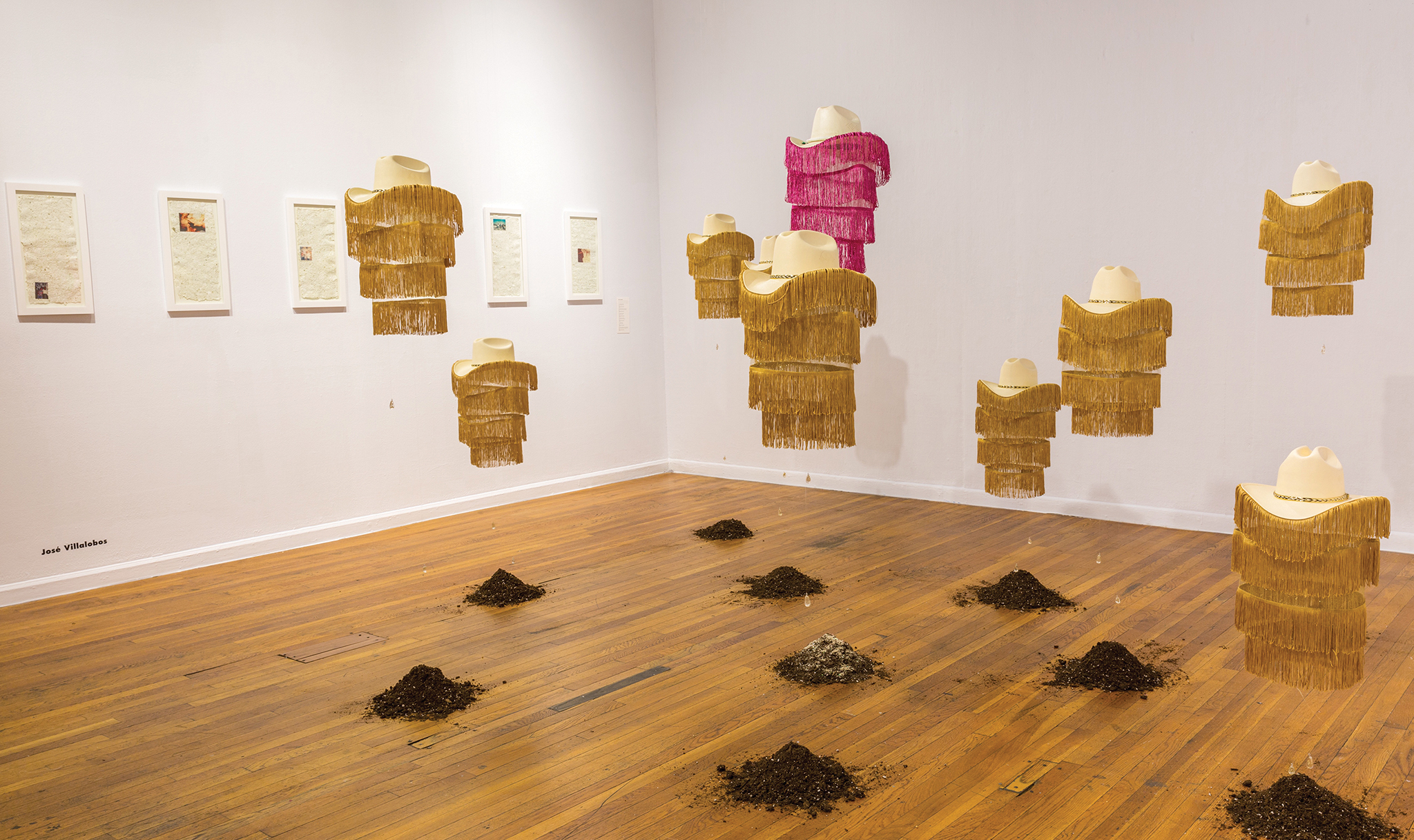
Villalobos explains that his relatives on his deceased father’s side are very proud of their last name, finding great self-worth in carrying on its heritage. That pride, of course, conflicts with his own path. “There was this very prominent pressure about me having a kid, because I was gay,” Villalobos says. “I’m like, ‘Well, you know I can. I want to adopt someday or get a surrogate.’ But comments made by my relatives would be like, ‘No, if you’re going to do it, you’re going to do it the right way.’ It’s hurtful when you hear things like that. That specific work is about not being able to pass on my last name in a traditional way.”
Not only in “Sin la S,” but also in Villalobos’ other works, tassels play an important role of subversion, recentering macho culture around the metaphorical and literal fringes. In Western revues and norteño concerts, fringes typically suggest flamboyant fun while also carefully avoiding too explicit a deviation from gender norms. Villalobos forces that deviation, then explores both the pain and the freedom of nonconformity, the loss of cultural belonging and the possibility of recovering a more authentic self. By embracing fringe, slurs, effeminacy and public reckoning with private traumas, Villalobos enacts in the gallery a homecoming that remains out of range in his personal life.
–
Villalobos’ works often seem to borrow from each other, echoing materials or arrangements, but each contains its own story. He returned to the white cowboy hat as a symbol for a show earlier this year at Presa House Gallery in San Antonio. In this newer work, the hats are again hung from the ceiling, this time sans tassels and with the brims separated from the crowns and connected by chains of pearls. Each chain contains a delicate white rose, suspended in midair as if both imprisoned and preserved within the force field of the hat.
This, Villalobos explains, references an episode that took place when he was 10 years old, just before the death of his father. “When my father was passing away, he spoke to all the men in the family, but he didn’t speak to me,” Villalobos says. “I don’t know if I was too young, or — I just don’t know. He told them how they should treat their wife like a pearl, and how they’re pure and how you’re supposed to take care of them. This particular work … it’s about this sense of purity, how carrying on these traditions is considered a pure thing.”
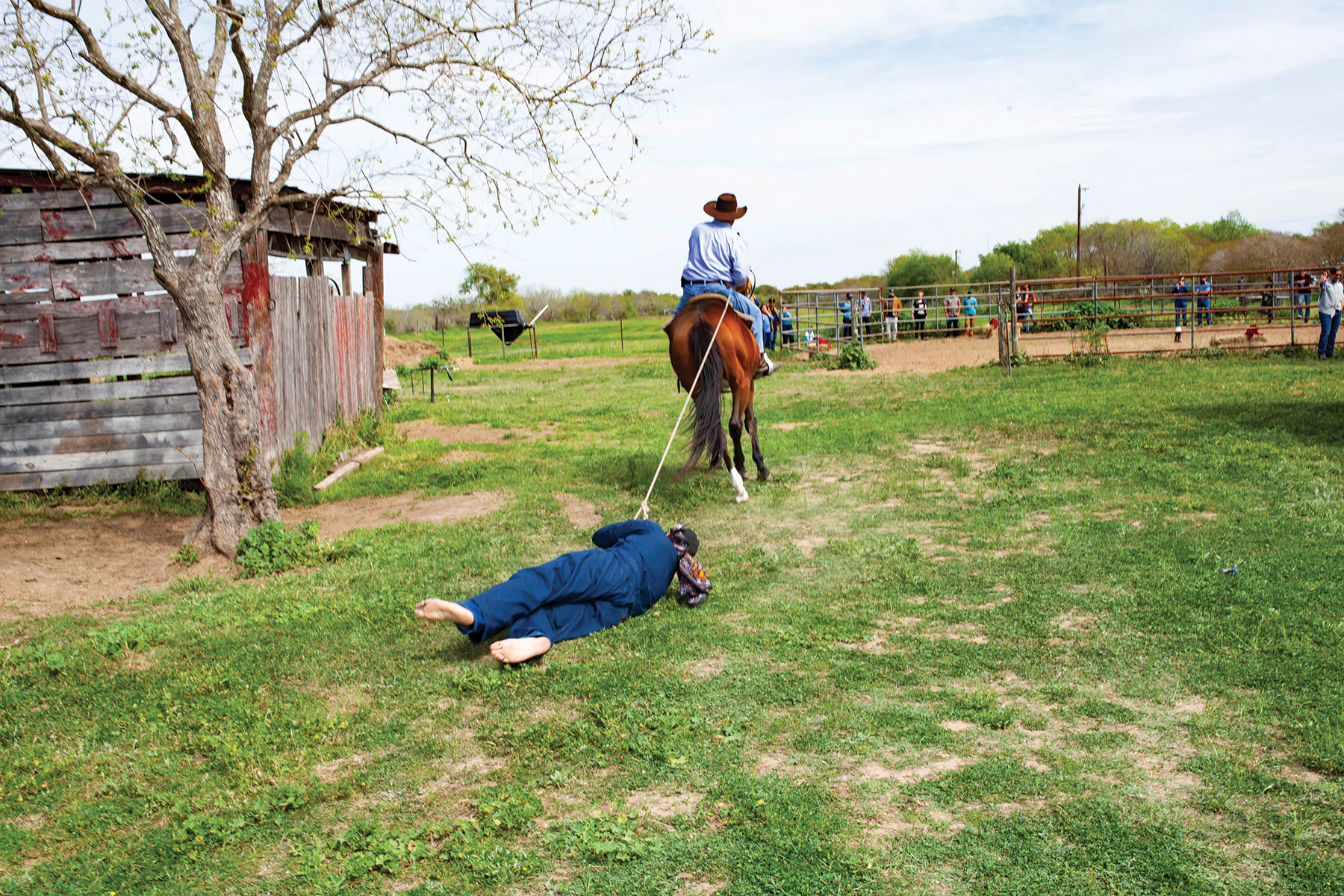
Another work on display in his studio-bedroom refers to a long-ago conflict between Villalobos’ father and an uncle who now lives in San Antonio. In Villalobos’ telling, this uncle “tried coming out as gay, and my dad kicked his ass and he said that he would not be gay until the day my grandmother passed away.” Eventually, however, the uncle escaped the pressures of his family and made his way to San Antonio. Today, Villalobos speaks of him as a “very supportive” presence in his life.
Despite the obvious pain of these stories, it’s clear from Villalobos’ art that his relationship with norteño culture is not simplistically inimical. If anything, he surrounds himself with norteño objects as a way of keeping them in his life, despite the barriers created by homophobia. “It’s, like, trying to be able to be OK and out and be who I am, and still being able to participate in it,” he says.
Villalobos’ most profound catharsis comes through his performance art, in which he often appears in costumes he’s designed. Typically these performances move him symbolically through a past trauma. In “Callado Como Hombre/Quiet Like a Man,” a piece that speaks to his experience as a rape survivor, he gradually dyes his all-white outfit red with prickly pear juice, one sensitive region at a time. In another work, “Ni de aquí, ni de alla, pero siempre regreso arrastrado/Neither from here nor from there, but always dragged back,” Villalobos performs his upbringing as a binational outsider, pulling himself through dirt by a rope wound through a pulley and tied to his ankles. He says these performances provide intense psychological relief rooted in a reliving and purging of these formative traumas.
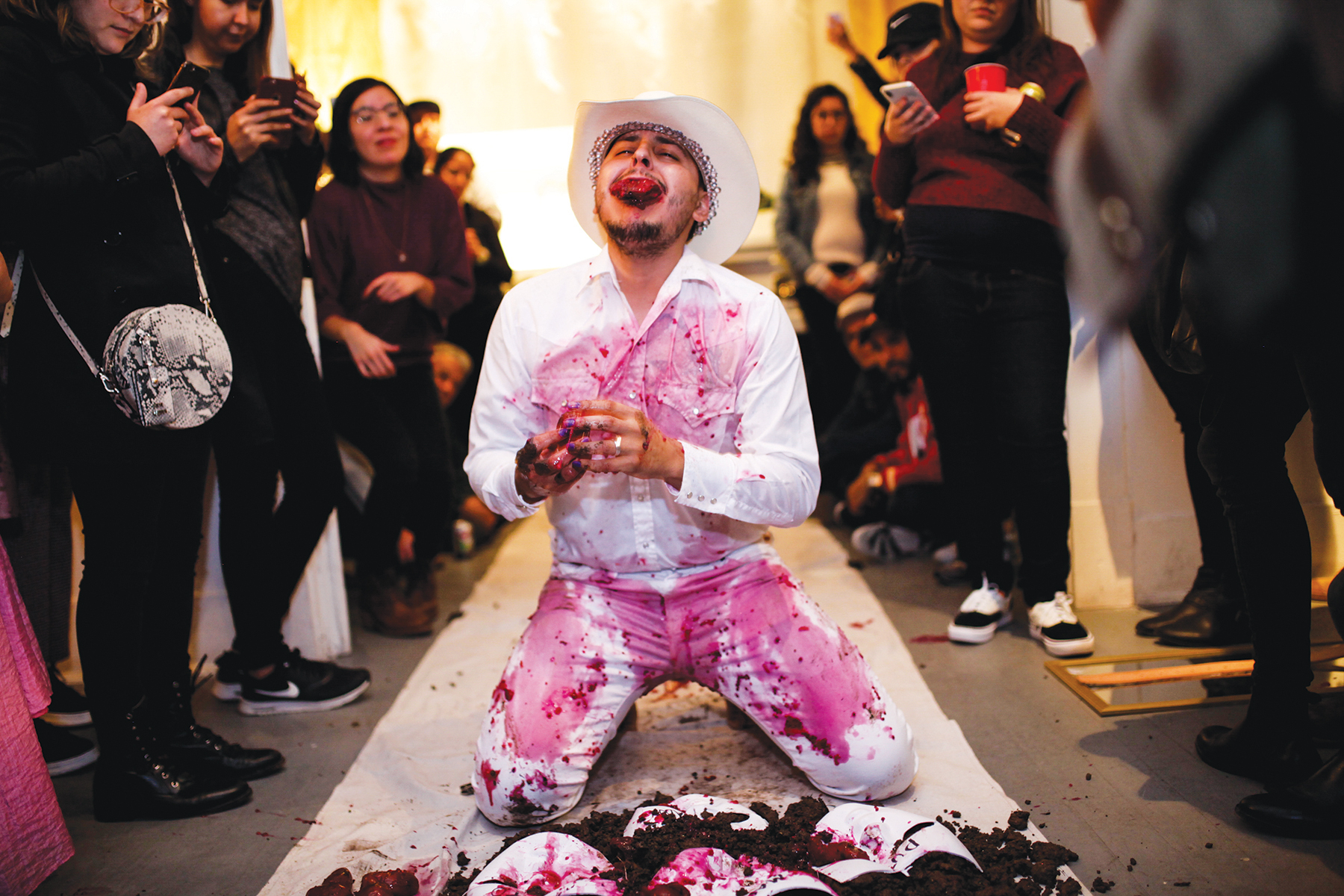
In June, Villalobos’ latest work debuted in San Antonio as part of the McNay Art Museum’s ambitious exhibition Transamerica/n: Gender, Identity, Appearance Today. At press time, he was still planning his performance for the opening-night festivities, which he expected to include cutting open his shirt and removing a cow’s liver — a reference to famous ranchera singer Vicente Fernandez, who recently made headlines for refusing a liver transplant from fear the donor might have been gay. Villalobos also made clay boots to wear during his Transamerica/n performance, designed to break down over the course of the event. The remnants of these boots would then be included in the exhibition, which runs through September 15. These can be read as a hopeful gesture toward the possibility of a breakdown of the barriers implicit in cowboy apparel, appropriate for a notably groundbreaking exhibition at one of the state’s leading museums.
This newest performance is in keeping with a focus on boots in Villalobos’ most recent works. These include a nascent project tracking the foot deformations of Mexican men who wear high-heeled boots their entire lives, and minimalist wall-hangings that reproduce stitch patterns familiar from the front of cowboy boots.
The silent, seemingly eternal, looping and repeating patterns from the boots’ stitches conjure both the innocence of childhood and the idea of a culture that persists in spite of individual choice, growth or resistance. “It’s kind of just a reminder,” Villalobos says of the pattern. “Even though I’m making this work and trying to break these barriers between machismo and being gay, there’s still that reminder that this is what it is. It’s always going to be. It’s always going to be. It’s a cultural thing.”
